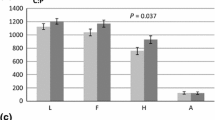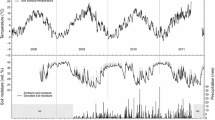Abstract.
Elevated concentrations of atmospheric CO2 increase plant biomass, net primary production (NPP) and plant demand for nitrogen (N). The demand for N set by rapid plant growth under elevated CO2 could be met by increasing soil N availability or by greater efficiency of N uptake. Alternatively, plants could increase their nitrogen-use efficiency (NUE), thereby maintaining high rates of growth and NPP in the face of nutrient limitation. We quantified dry matter and N budgets for a young pine forest exposed to 4 years of elevated CO2 using free-air CO2 enrichment technology. We addressed three questions: Does elevated CO2 increase forest NPP and the demand for N by vegetation? Is demand for N met by greater uptake from soils, a shift in the distribution of N between plants, microbes, and soils, or increases in NUE under elevated CO2? Will soil N availability constrain the NPP response of this forest as CO2 fumigation continues? A step-function increase in atmospheric CO2 significantly increased NPP during the first 4 years of this study. Significant increases in NUE under elevated CO2 modulated the average annual requirement for N by vegetation in the first and third growing seasons under elevated CO2; the average stimulation of NPP in these years was 21% whereas the average annual stimulation of the N requirement was only 6%. In the second and fourth growing seasons, increases in NPP increased the annual requirement for N by 27–33%. Increases in the annual requirement for N were largely met by increases in N uptake from soils. Retranslocation of nutrients prior to senescence played only a minor role in supplying the additional N required by trees growing under elevated CO2. NPP was highly correlated with between-plot variation in the annual rate of net N mineralization and CO2 treatment. This demonstrates that NPP is co-limited by C availability, as CO2 from the atmosphere, and N availability from soils. There is no evidence that soil N mineralization rates have increased under elevated CO2. The correlation between NPP and N mineralization rates and the increase in the annual requirement for N in certain years imply that soil N availability may control the long-term productivity response of this ecosystem to elevated CO2. Although we have no evidence suggesting that NPP is declining in response to >4 years of CO2 fumigation, if the annual requirement of N continues to be stimulated by elevated CO2, we predict that the productivity response of this forest ecosystem will decline over time.
Similar content being viewed by others
Author information
Authors and Affiliations
Corresponding author
Additional information
Electronic Publication
Rights and permissions
About this article
Cite this article
Finzi, A.C., DeLucia, E.H., Hamilton, J.G. et al. The nitrogen budget of a pine forest under free air CO2 enrichment. Oecologia 132, 567–578 (2002). https://doi.org/10.1007/s00442-002-0996-3
Received:
Accepted:
Published:
Issue Date:
DOI: https://doi.org/10.1007/s00442-002-0996-3




